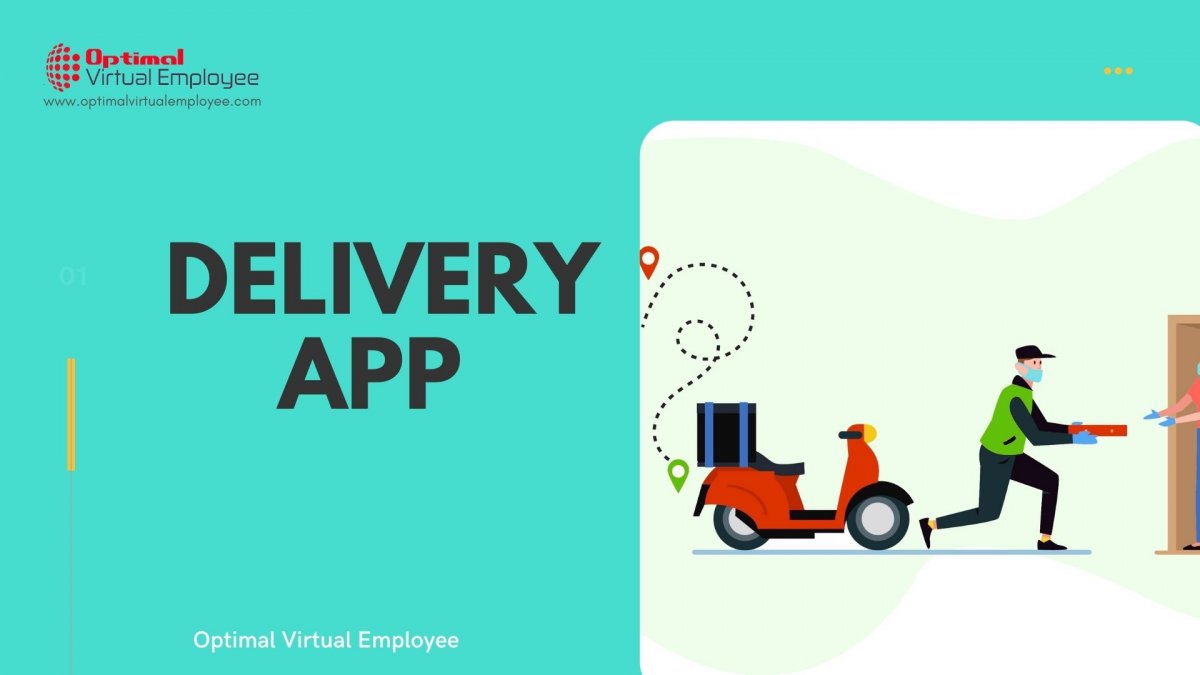Since their inception a few years ago, we had seen delivery and logistic business scale, but the advent of the global pandemic in 2020 has accelerated their growth by leaps and bounds. As more customers turn to the world of eCommerce, there will be an increased need for delivery partners to bring all the goods to the end customers. This presents a great opportunity for logistic businesses to be one-stop-shop solutions for their eCommerce partners. And how does a delivery business accomplish that, you ask? The answer is ‘by building a mobile app.
Key Features of a Delivery App
-
User-Friendly Navigation
The user profiles for a delivery app may differ considerably. While delivery personnel may use the app on a mobile device, an end customer may use it on desktop or tab instead. The app must be designed to accommodate the needs and devices of various users. App developers must create various outlines keeping in mind different user roles. The app must meet the business’s needs, delivery personnel and the end customer all in one. The app should offer different options at the time of login and let them access different dashboards depending on their needs from the app.
-
Status Tracking
It’s difficult to wait for something that you want. The suspense can be too much to bear at times. Integrating a status tracking feature into the delivery app helps the customer keep up with their order’s whereabouts. A user who likes to know where the order is and what time it will reach them can easily log into the app dashboard to track their orders. Experienced mobile app developers make it a point to display the order’s status, a visual representation of the route while it is in transit and an option for the customer in case they want to speak with the delivery personnel.
-
Delivery Optimization
Most delivery apps need a lot of features but have little screen real-estate to accommodate them. It’s best to start with the very basic features and offer more as you scale. There are some features that every delivery app must include. For example, a button that shows all the orders a customer has placed, that can be segregated based on date. Features like delivery cards that display important details like the order number, addresses and billing info etc. should be incorporated. An app that offers delivery scheduling allowing customers to pick windows for order delivery helps save failed delivery attempts.
-
Customer Support
On a never-ending list of delivery partners’ names, customers will stick with the responsive ones. Only businesses that offer continuous customer support make reliable delivery partners and retain customers. Customers expect prompt responses to their questions, queries and complaints. An easily accessible customer support option engages a customer in distress and helps them execute their tasks.
-
Delivery Cost Optimization
Very often, businesses find it expensive to execute last-mile deliveries. Delivery apps should be designed to slash down last-mile delivery costs and bring home better ROIs. App developers who focus on optimizing the delivery route help businesses reduce fuel costs and brush up delivery personnel’s productivity. Route planning and optimization are an indispensable aid for logistic managers that can bring down the operational expenses. Moreover, businesses can reduce failed deliveries by issuing push notifications updating customers about delivery schedules.
How Much Does it Cost to Build a Delivery App?
The actual cost of developing a delivery app is determined based on the number of hours that go into building it. And the number of development hours is directly proportional to the number of features you want on your mobile app. So, to derive a realistic estimate of app development cost, it’s best to discuss your requirements in detail.
Pro Tips for Delivery Mobile App UI
- Swipe Gesture: Users find it easier to swipe than to tap on buttons when they are on the go.
- Don’t Crowd Buttons– Keep your tab bar spaced out with sparsely placed elements like buttons, to make it easier for users to select what they want. A crowded tab bar can lead to tapping on the wrong button.
- More Button: Things of secondary importance like settings, profile info and messages can be conveniently shoved into a ‘more’ button.
- Minimalistic UI– Opting for an overall minimalistic UI design approach, app designers can find a lot of space for the action bar to accommodate important features like a search bar or provide for notifications.
- Design for 24*7– Since deliveries work round the clock, the delivery app should be easily usable during sunny brights as well as pitch dark of the nighttime. Using alternating colour schemes for different times of the day can help solve this problem.
In the End
While the logistics involved in a delivery business are difficult to execute; having an app to serve your customers is the best thing right now. A delivery app that allows easy order placement and tracking, secure payment gateways and other order management tools for businesses can help the business gain a competitive edge.
Right kind of strategy pedalled through a mobile app can bring home profiteering returns.
Are you looking to develop a delivery app? Talk to our app developers today!
Read more:
Why Your Startup Should Start with Android Application Development









